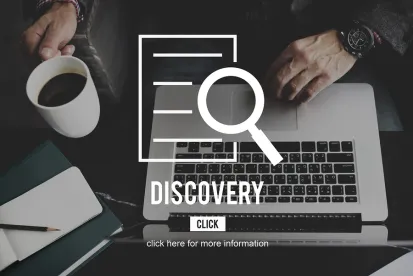As technology changes, so, too, does our treatment of electronically stored information (ESI) for discovery purposes. Today, hyperlinks are frequently utilized within communications to link the reader to another source document.
Just when we got a handle on the treatment of document “families” – parent emails with children attachments, existing in time and space exactly the same as the day they were sent – hyperlinks are emerging as the “new attachments.” Hyperlinks, however, are different than attachments in several material respects: they are stored in a location separate from the email or document (this could be, for example, elsewhere within an entities’ server environment or externally to a website). The source data can be moved, deleted, or even altered from the source at any time, and that change won’t be reflected in the parent email or document. In the context of an email containing hyperlinked information, the family, in essence, is not preserved in space and time because it can be dynamic.
So how do we treat the hyperlink for purposes of discovery? Is the link an attachment? Should it be captured as part of the universe of documents for review? Does it depend on public accessibility of the source data? At least one court has grappled with the issue so far and more may be doing so in short order. Magistrate Judge Parker (Southern District of New York) faced this issue in her recent discovery decision in Nichols v. Noom, 2021 WL 948646 (S.D.N.Y. 2021) (“Noom”) In Noom, the parties attempted to do all the right things pertaining to their exchange of electronically stored information (ESI). For example, they attempted to negotiate an ESI protocol at the outset, consistent with the Sedona Principle’s best practices. But disagreements arose early. After several conferences with the court, Noom agreed to collect data from multiple sources including Gmail, G-chat, Google Drive, Google Calendar, Slack, and other reporting tools and databases. A dispute arose about the pros and cons of competing tools to collect the data from Gmail. Plaintiffs wanted Noom to use Metaspike’s Forensic Email Collector (FEC), while Noom desired to use Google Vault. The main difference between the two is that Google Vault does not pull documents referenced in emails via a hyperlink.
The court held a hearing on the matter, aided by eDiscovery vendor declarations. Noom contended that it is reasonable to use Google Vault to collect Gmail documents because Noom is separately collecting the Google Drive documents that are referenced as file hyperlinks through its custodial and share drive collections. The Court determined that Noom could use its preferred software to collect the data but if there were particular key documents containing hyperlinks where the hyperlinked documents could not be otherwise located in the production, Plaintiffs could raise the issue with the Court and Noom would be required to make the connection. Noom was willing to do this for a reasonable number of documents.
But, once document exchange started, Plaintiffs wanted another bite at the apple. They noticed that there were thousands of internal Noom documents that contained hyperlinks to other internal Noom documents and asked the court to reconsider and hold that the hyperlinked internal documents be treated as attachments (putting the duty on Noom to review and produce or log). There was no meeting of the minds between the parties because the ESI protocol didn’t specifically address this issue. And Gmail and Google Drive data (which included most of the relevant hyperlinked documents) had already been collected. The Court reached a ruling that accounted for proportionality, cost, and delay. It determined that hyperlinks are not equivalent to attachments and stood by the initial ruling that the Defendant did not need to re-collect data with familial attachments in place:
When a person creates a document or email with attachments, the person is providing the attachment as a necessary part of the communication. When a person creates a document or email with a hyperlink, the hyperlinked document/information may or may not be necessary to the communication. For example, a legal memorandum might have hyperlinks to cases cited therein. The court does not consider the hyperlinked cases to be attachments. A document also may contain a hyperlink to another portion of the same document. That also is not an attachment. A document might have a hyperlink shortcut to a SharePoint folder. The whole folder would not be an attachment.
The court held that the protocol it previously established, requiring the parties to raise the issues on a document-by-document basis, provided the appropriate balance for the needs of the case.
Takeaways:
-
Use eDiscovery vendors and experts to assist you in presenting your ESI issues to the court.
-
This is an evolving area of law. If you want hyperlinks treated a certain way in discovery, negotiate it in the ESI protocol early, before either side sinks significant cost into discovery.
-
Proportionality, costs and delay area always good arguments in discovery disputes, especially when time and money has already been expended on discovery.
-
Fight for what is really important. Maybe thousands of hyperlinks aren’t important, but ten hot ones are important. Take those specific issues to the Court and you are likely to obtain the more focused relief.




 />i
/>i

